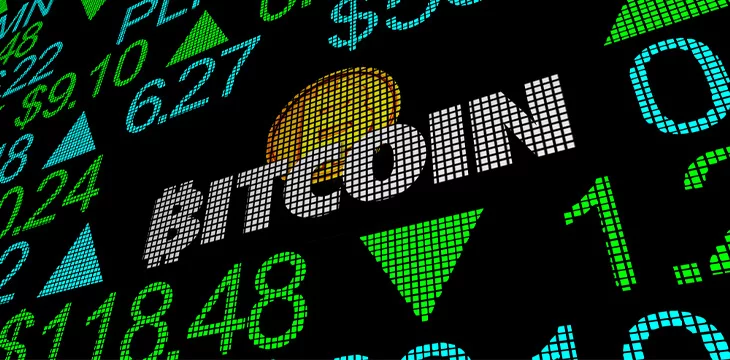|
Getting your Trinity Audio player ready...
|
To read full Legal Opinion Click Here.
International law firm Buffone Law Group has issued guidance to the Ayre Ventures that the original protocol of Bitcoin as represented by BSV blockchain is likely not a security under U.S. law.
The advice was no doubt sought out of prudence following the U.S. Securities and Exchange Commission’s (SEC) barrage of enforcement actions against the listing of illegal digital asset securities. SEC Chair Gary Gensler had signalled that such enforcement was around the corner back in September, when he warned that the ‘vast majority’ of digital assets on exchanges were securities. Buffone had earlier issued advice that Ethereum 2.0 amounted to a security, reflecting increasing recognition by the private sector and regulators that many digital assets previously thought to not be securities do in fact meet the definition.
Indeed, as the memo points out, the SEC doubled the size of its digital assets enforcement division in May 2022 and highlights that the SEC has brought at least 99 enforcement actions against digital asset companies.
In the midst of this, the advice says:
“One truth remains: that Bitcoin is not a security. However today there exists a dispute over what that original Bitcoin is… BSV, which is based upon the original Bitcoin protocol and committed to keeping that protocol static, is clearly not a security.”
“Other versions of bitcoin, including Bitcoin Core (BTC), have changed their underlying protocol, necessitating ongoing developer intervention and promotion, that raise questions about whether these digital assets have transformed into securities. Only BSV, which has remained unchanged and consistent with the original Bitcoin White Paper since bitcoin first launched in 2009, does not face these risks.”
Bitcoin as represented by BSV blockchain does not meet the Howey test
The memo goes over the latest status of the Howey test as it applies to digital assets. Howey is a long standing-legal precedent which establishes the test for whether a given asset offering amounts to an investment contract under the U.S. securities legislation and therefore is a security.
Under Howey, an investment contract exists if there is:
- An investment of money;
- In a common enterprise;
- With a reasonable expectation of profits based upon the efforts of others
There is an investment of money. This prong of Howey will almost always be met. The test does not require investment of fiat – merely an exchange of value “which includes not only fiat money but also digital tokens and even goods and services,” according to the memo.
In a common enterprise. Some dispute has arisen over what constitutes a common enterprise, and courts are generally split between requiring ‘vertical commonality’ (meaning commonality of interest between the investor and the promoter) and ‘horizontal commonality’ (meaning commonality between investors).
Reasonable expectation of profits based on the efforts of others. This is the prong of the Howey test which gets the most attention in the digital assets’ context.
Where an issuer has privatized their ledger and the utility of the underlying coin is required to give the asset continuing value, that has the effect of making the purchasers reliant upon the issuer for the asset’s value, likely fulfilling this prong of the Howey test. “Accordingly,” says the memo, “a touchstone for finding whether profit is expected from the effort of the promoter or third party is whether the blockchain underlying the digital asset is privatised.”
This point has been the subject of new developments in the courts.
The court in the highly-publicized case of SEC v Ripple Labs recently analyzed whether Ripple’s sale of XRP to various buyers fell afoul of Howey. Under this third prong, it found that only sales to institutional buyers met the Howey test; programmatic sales (i.e., public buyers on exchanges) did not because the buyers could not reasonably expect that Ripple would use the money to increase the value of XRP because the buyers could not have known their money was going to Ripple or some other seller of the asset.
Though that decision was greeted with much applause from Ripple and XRP’s many bagholders, it was quickly diminished by subsequent decisions. On July 31, a court with equal authority to the one in Ripple issued a decision in the SEC’s case against Terraform Labs and its founder Do Kwon which expressly disagreed with the conclusion in Ripple. He said:
“That a purchaser has bought the coins directly from the defendants or, instead, a secondary re-sale transaction has no impact on whether a reasonable individual would objectively view the defendant’s actions and statements as evincing a promise of profits based on their efforts.”
Yesterday August 9th, the SEC filed a letter of intent to request an interlocutory appeal to Judge Torres’s July 13th summary judgement in the Ripple case.
What this means for Bitcoin
Buffone’s memo sets the starting point for considering whether Bitcoin is a security: it highlights a speech given by SEC Chairman Jay Clayton in 2018 where he said that Bitcoin does not qualify as a security because it functions as a replacement for currency.
“In other words,” reads the memo, “Chairman Clayton reasoned that any digital currency whose primary function is to serve as a substitute for fiat currency would not qualify as a security.”
Similarly, a speech given by former SEC Director of the Division of Corporation Finance William Hinman made the point that Bitcoin is not a security under the Howey test and “in large part focused on how the distinction between a decentralized technology and central promoters driving a blockchain can create the distinction between a commodity and security,” reads the memo.
Additionally, as recently as July 2022, current SEC Gary Gensler has reiterated that Bitcoin is not a security.
Which begs the question: what is Bitcoin? The memo describes Bitcoin as “a direct-exchange (or user-to-user) network through which participants may send other participants bitcoins without the need for any intermediary. The Bitcoin system is comprised of 21 million coins that are designated as bitcoins and which each includes 100 million fungible, indivisible digital tokens known as satoshis. The Bitcoin protocol uses digital signatures, hashing algorithms that publish data in clear text, and a distributed network of nodes to control the management of Bitcoin.”
The definition of Bitcoin comes from the white paper, which unambiguously describes a system of electronic cash.
In the early days when Bitcoin initially adhered to this definition, it traded under the ticker BTC. However, the memo points out that several years into Bitcoin’s development a group of developers seized control of the protocol and made fundamental changes to it, including the Segregated Witness (SegWit) update in August 2016, which removed all signature data from Bitcoin transactions and put them in a separate structure. This change was intended to enable the Lightning Network, “a software that could now run on top of the new protocol and created a separate network which no longer has the characteristics of a blockchain and takes advantage of the separation from the blockchain to limit the traceability of transactions.”
Another update, Taproot, “had the intended outcome of making it harder to audit transactions and potentially allow for the anonymous use of BTC.”
“These changes moved away from the digital asset concept of the Bitcoin protocol towards a cryptocurrency concept that would allow for anonymous and untraceable transactions. Because SegWit introduced a new protocol that was incompatible with the Bitcoin protocol, new coins that complied with the new and changed protocol had to be issued.” (emphasis added)
BSV would eventually restore the original Bitcoin protocol—and unlike BTC, the underlying protocol has been left untouched.
This distinction, says the memo, is key to understanding why Bitcoin as represented by BSV blockchain is not a security, while BTC very likely is. As referenced by both the Howey test and the SEC, centralized management of a blockchain is one of the key ingredients used to determine whether a digital asset is a security:
“First, centralized management often can bolster an argument that a common enterprise exists. Further, centralized management, which almost always is financially motivated, bolsters an argument an expectation of profit exists.”
“By taking a static and immutable protocol and implementing changes developed, advocated for, and implemented by a core group of developers with an obvious financial interest in BTC, BTC has opened itself to the argument that it has changed what was once a commodity into a security.”
“In short, as the SEC says, it is not enough to say you are not a duck. Merely claiming to be bitcoin will not save a coin that transforms into a security.”
By contrast, the BSV blockchain had not deviated from the original Bitcoin protocol. The memo cites BSV blockchain’s suitability as a platform for everyday transactions, the original vision for Bitcoin: “BSV transactions are processed in a matter of seconds compared to between 10 minutes and up to 1 hour for BTC.” It also points to BSV blockchain’s average transaction fee of less than 1/1000 of a cent compared to BTC’s average fee of around $7.25. Both these factors are reflected in the fact that BSV blockchain’s daily transaction volume is over 2,500,000 per day with peaks of up to 50,000,000—compared with just 450,000 per day for BTC.
Further, the memo says that the following factors weight strongly in favor of BSV’s status as a commodity rather than a security:
- Did not do pre-mining
- Had no new issuance, reissuance, a secondary offering and/or airdropping in its lifetime
- Is based on genuine proof-of-work
- Has a locked base protocol according to the law
In other words: “BSV does not walk like a duck nor quack like one.”
In closing, the memo says that while the SEC’s enforcement approach is evolving quickly, there remains one constant: Bitcoin is not a security.
“The safest way to ensure any cryptocurrency is not a security is to ensure it stays true to the original Bitcoin protocol as envisioned by Satoshi Nakamoto. That protocol was static and immutable. BSV is the only cryptocurrency utilizing that same static and immutable protocol. Meanwhile, those cryptocurrencies moving away from Nakamoto’s original vision and protocol, as in the case of BTC – are increasingly at risk of securitization and being subject to SEC oversight.”
To read full Legal Opinion Click Here.
London Blockchain Conference 2023 AMA: Bitcoin at scale is all about micropayments

 12-18-2025
12-18-2025 




